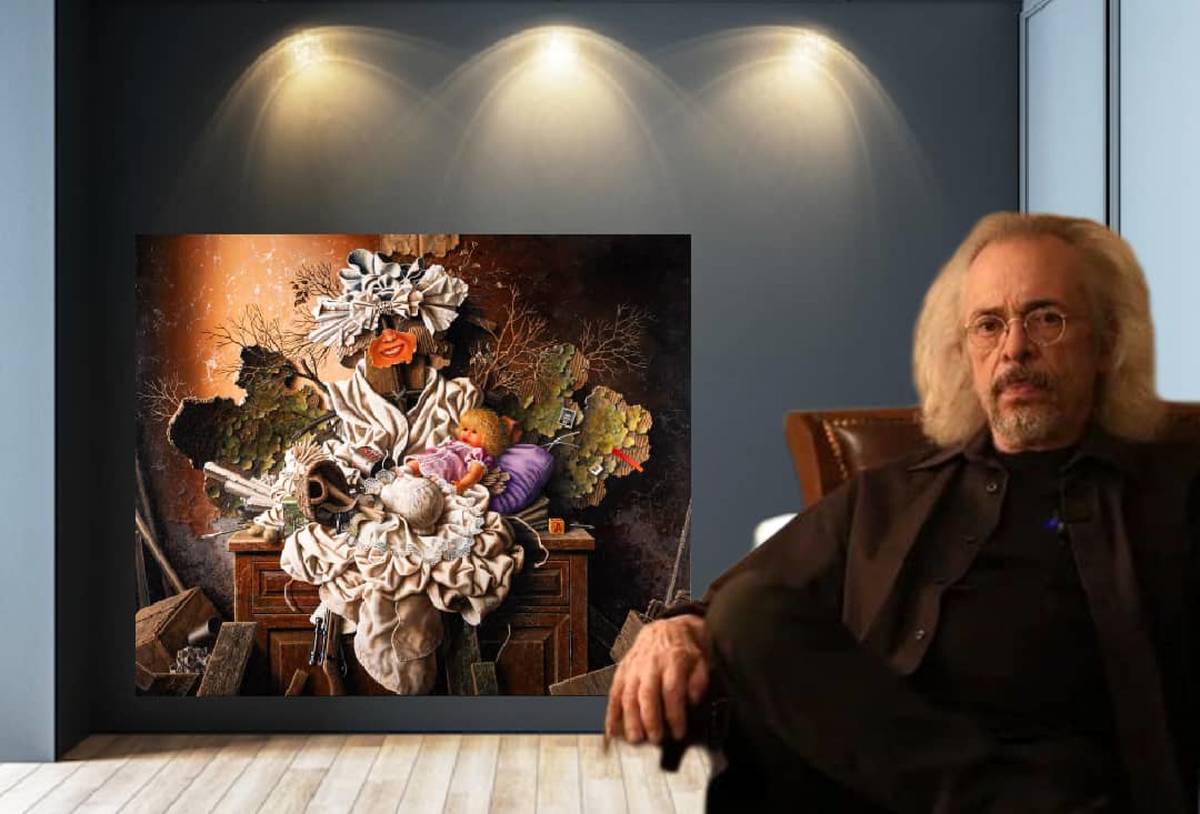
Wahed Khakdan and Nostalgia in the Raha Gallery Collection
Wahed Khakdan, the distinguished Iranian painter, passed away a few days ago, on October 23, at the age of 75. In tribute to this eminent artist, we examine one of his remarkable and thought-provoking works preserved in the Raha Gallery Middle East Collection — a seminal painting in which Khakdan, the master painter, creates a poetic and melancholic dialogue between childhood and violence, between beauty and destruction. Each component of the painting carries a visual memory that, when combined, forms a pictorial statement on the human condition in contemporary times.
ArtDayMe : The Raha Gallery Middle East Collection, founded and directed by Mohammadreza Ghaemmaghami, has been actively engaged in promoting regional art and culture for over two decades. The collection preserves a diverse range of modernist and contemporary masterpieces by Iranian and Arab artists.
Among these works is a beautiful and contemplative painting by Wahed Khakdan, from his highly recognized series in a surrealist–realist style, created in 2016 using oil on canvas, measuring 100×120 cm.

Wahed Khakdan [born November 28, 1950 – died October 23, 2025] was an Iranian hyperrealist painter. He held an academic degree in interior architecture, and while his artistic approach leaned toward hyperrealism, many art theorists have referred to him as the distinguished neo-realist of Iran and the Middle East. His subjects often featured ordinary, everyday objects that, through his masterful treatment, gained a transcendent value and were immortalized on canvas.
Khakdan held his first solo exhibition at Seyhoun Gallery in 1974, and his last at Mah Gallery in August 2025. His works continue to attract growing attention in art auctions.
In this particular painting, held in the Raha Gallery Middle East Collection, Khakdan transforms the world of objects, memories, and decay into a poetic allegory with a critical undertone. The composition, pyramidal and centrally structured, directs the viewer’s gaze toward the focal point — a cluster of folded fabrics, a toy, and a collaged smiling face. The general arrangement rests on relative symmetry, yet its inner details teem with deliberate disorder and controlled chaos, preserving the visual balance and preventing collapse of the scene.
The warm color palette, with tones of brown, ochre, and gold, evokes a mood of decline, twilight, and nostalgia. A focused light from the upper left accentuates the textures of fabric and wood, adding a theatrical and staged quality to the atmosphere. In the background, the interplay of shadow and scorched hues creates a visual drama oscillating between the brightness of the smile and the surrounding darkness.
Through his exceptional skill in rendering textures, Khakdan bridges the real and the imaginary. The fabrics are painted with such precision and softness that one feels their tangible presence, while other elements — wood, toy, and dry branches — retain their distinct materiality. This meticulous realism intensifies the painting’s inner contrast: beauty within decay.

The work is rich with layered symbols and metaphors:
• The child’s doll stands for lost innocence or nostalgia for the safety of childhood.
• The collaged smile on an anonymous face hints at imposed optimism or a mask concealing pain and harsh reality.
• The folded and creased fabric symbolizes a troubled mind, a burdened memory, and social concealment.
• The partially hidden gun beneath the table reveals the latent threat of violence beneath an otherwise calm surface.
• The dry branches and patched leaves poetically allude to dead nature and faded memories.
This painting continues Khakdan’s enduring concern with the role of humankind in destruction and alienation. At first glance, the scene may appear calm and decorative; yet, beneath the surface, the contrasts between the child and the weapon, the white cloth and the decaying wood, the smile and the violence, draw the viewer into a philosophical inquiry into the nature of beauty, truth, and concealed pain.
Through a fusion of magical realism and pictorial collage, Khakdan constructs a space that is neither entirely real nor wholly imaginary. His treatment of light and volume recalls Baroque painting traditions, though his content remains distinctly contemporary and critical. The arrangement of objects may resemble a still life, yet its spirit transcends that genre, evolving into a meditation on social critique and existential reflection.

This painting can be viewed as an image of memory, decay, and the persistence of life amid ruins.
In this work, Khakdan orchestrates a poetic and somber dialogue between childhood and violence, beauty and destruction. Each visual element carries a fragment of memory that together forms a powerful visual statement on the modern human experience.
This artwork belongs to the Raha Gallery Middle East Collection.

LEAVE A RELPY